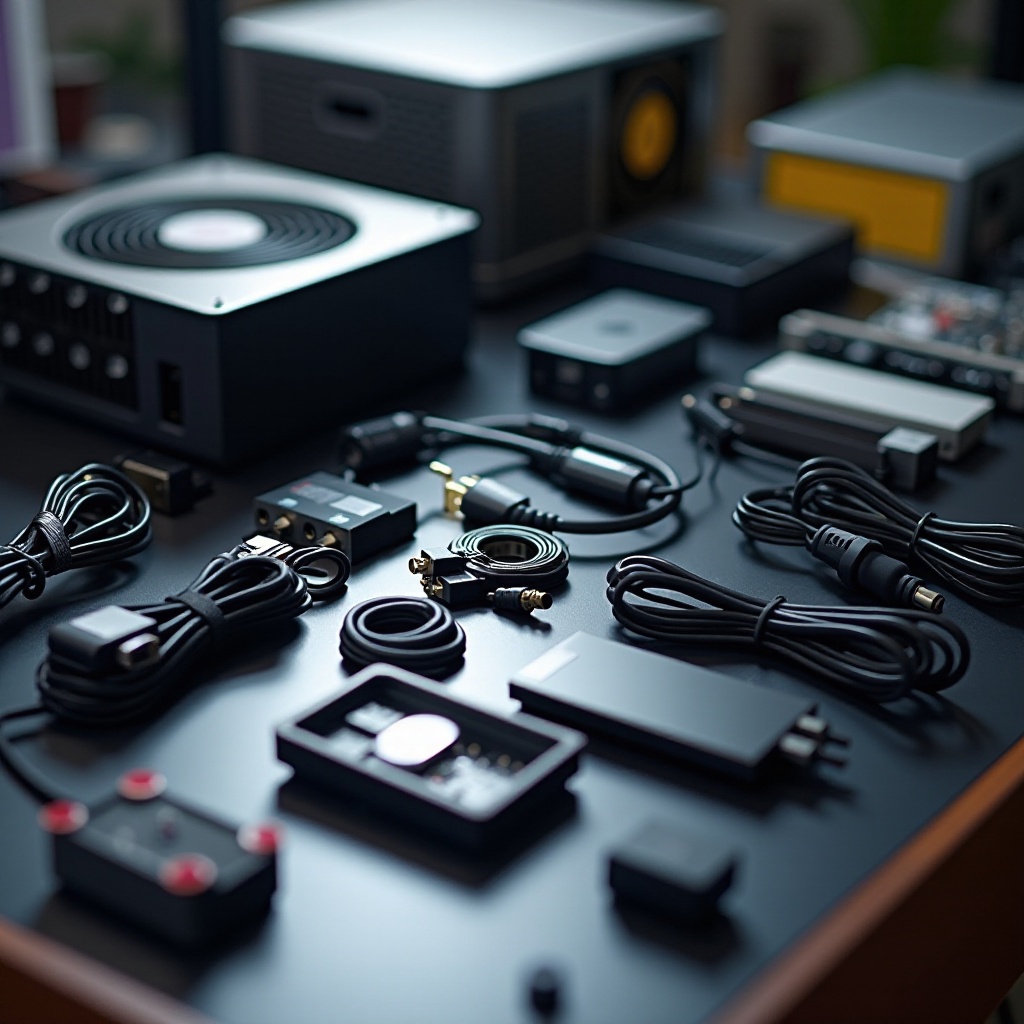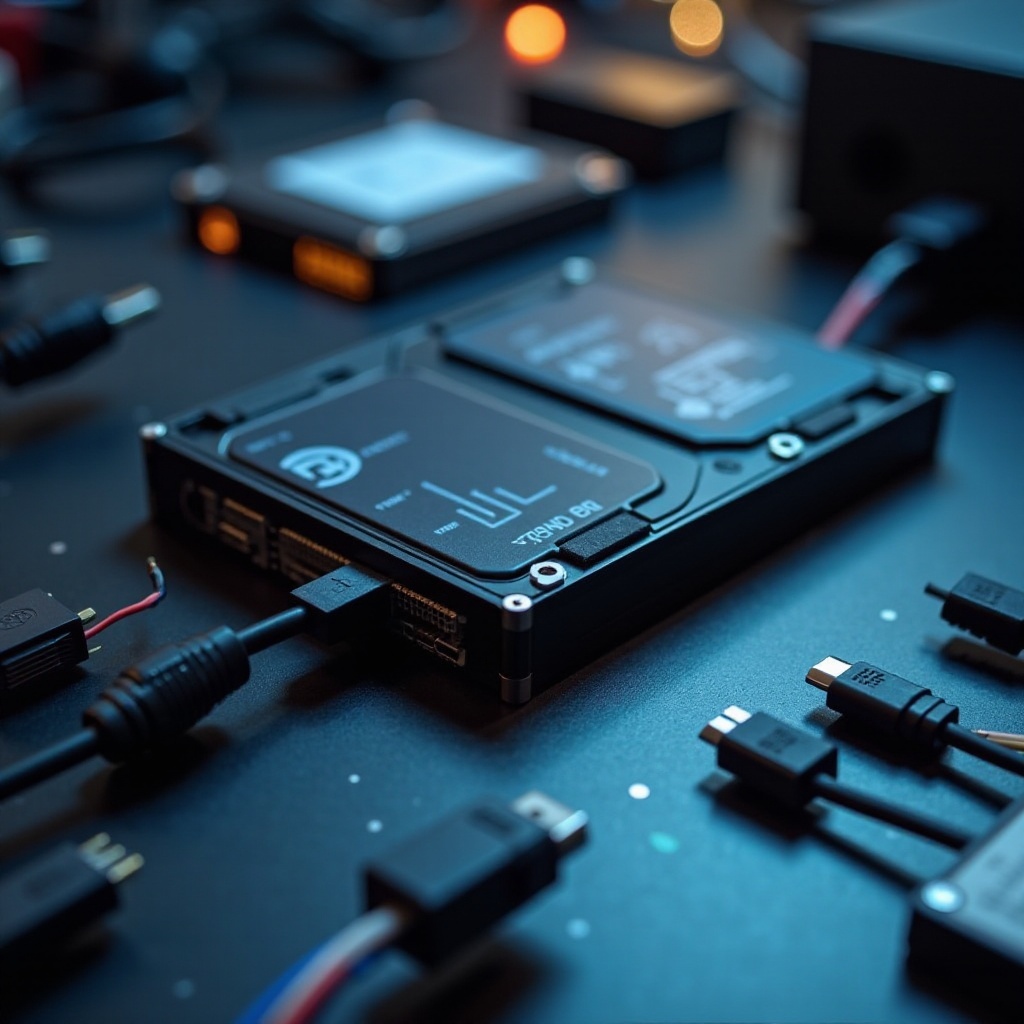Introduction
Purchasing computer parts often leads to the question: do these components come with the necessary cables? Knowing what’s included or missing is crucial for a smooth setup. This guide provides an in-depth look at what cables typically accompany common computer parts, equipping you with the information needed to make informed buying decisions and avoid unpleasant surprises.

Expected Cable Inclusions with Common Computer Parts
As you assemble or upgrade a PC, understanding what cables typically come with parts can save both time and frustration. While manufacturers usually provide essential cables, practices can significantly vary:
- Motherboards: Often include SATA cables critical for connecting hard drives and SSDs. Some models might offer extras for additional functionality.
- Graphics Cards: May include necessary power adapters for compatibility with certain power supplies or monitors.
- Storage Devices: SATA drives typically come with cables, whereas NVMe drives, which directly insert into the motherboard, usually do not.
- Monitors and Peripherals: While they typically come with power cords, these often need separate computer connection cables tailored to your setup.
Understanding these common inclusions assists in refining shopping lists, ensuring all required connections for your build.
Motherboards and Cables: What to Look For
Acting as your computer’s heart, the motherboard connects various components, and manufacturers often bundle several cables to support this integration:
- SATA Cables: Standard with most motherboards for linking storage devices.
- IO Shields and Cables: Generally included for clean integration within your PC case.
However, not every motherboard is created equal; premium models might provide additional features, like extra USB headers or advanced connectivity options. By knowing these specifics, you can plan efficiently, determining whether extra cables are necessary to enhance your setup.
Graphics Cards and Cable Accessories
Graphics cards are essential for rendering visuals and handling demanding tasks. When selecting a graphics card, examine its included accessories. Some might feature:
- Power Adapters: Required if your power supply lacks the necessary connectors directly.
- Output Adapters: Ensure versatility with different monitor connections.
Being aware of what’s included helps avoid compatibility concerns, allowing for a cohesive setup.
Storage Devices: Cable Requirements and Tips
Storage devices come with diverse cable needs:
- SATA Drives: These usually include necessary data cables.
- NVMe Drives: Fit directly into the motherboard, typically without additional cables.
- External Drives: Often come with their own USB or Thunderbolt cables.
Consider your storage requirements and verify which cables come with your purchase, ensuring a seamless fit into your broader setup plan.

Power Supply Units: Understanding Cable Management
Power Supply Units (PSUs), the powerhouse of any computer, vary in their cable configurations:
- Modular PSUs: Allow for connecting only the cables you need, improving airflow and organization.
- Non-Modular PSUs: Include all cables permanently attached, which might complicate tidiness.
Choosing the correct PSU involves assessing your system’s spatial constraints and components, making certain everything is compatible and facilitates an efficient build.

When You Might Need to Buy Extra Cables
Even with many bundled cables, certain situations might require additional purchases:
- Custom Builds: Creating a PC from scratch often demands extra cables not typically included.
- Older Systems: Upgrading parts may require adapters to ensure that old and new components work seamlessly.
- Extra Peripherals: Adding more monitors or storage devices might necessitate new cables for integration.
Choose compatible aftermarket cables to maintain system performance and avoid inefficiencies.
How to Identify and Select the Right Cables
Choosing the right cables involves several key considerations:
- Length and Compatibility: Ensure sufficient length and compatibility with current hardware.
- Quality: Better cables offer improved durability and reliability.
- Manufacturer Specifications: Always cross-check product specifics to verify compatibility.
By carefully evaluating these factors, you protect your investment and assure a smooth, efficient setup.
Conclusion
In understanding which computer parts come with cables, you’re better prepared to tackle a successful build. By discerning what’s generally included with each component, you can avoid surprises, make sound purchasing decisions, and ensure your build or upgrade goes off without a hitch.
Frequently Asked Questions
Do all computer parts come with the necessary cables?
Not all components come with required cables. While motherboards and graphics cards may include some, you might need additional items for complete setup.
What should I do if a necessary cable is not included?
If a cable is missing, consider purchasing third-party options that meet your system’s requirements. Verify compatibility to maintain performance.
Can I use third-party cables for my computer components?
Yes, third-party cables are usable if they match required specifications and ensure system compatibility, aiding in reliable performance.

